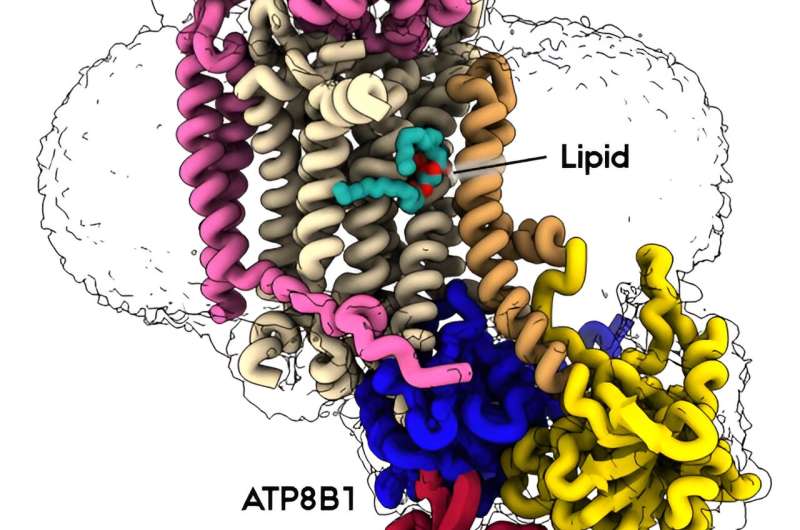This article has been reviewed according to Science X's editorial process and policies. Editors have highlighted the following attributes while ensuring the content's credibility:
fact-checked
peer-reviewed publication
trusted source
proofread
Research shows how important protein keeps our cell membranes in balance

Lipids are the main constituents of our cell membranes, which are formed as lipid bilayers. The distribution of lipids is far from uniform; it is asymmetric, with different lipid compositions in the outside and inside layers. This asymmetry is essential for a variety of cellular functions, from maintaining membrane homeostasis to enabling cell signaling and numerous other physiological processes at or across membranes.
P4-ATPases, or flippases, are key players in creating and maintaining this lipid asymmetry. These enzymes actively transport lipids from the outside (exoplasmic) leaflet to the inside (cytosolic) leaflet coupled to ATP hydrolysis and ensure the proper distributions of lipids. The ATP8B1-CDC50A flippase complex has been the subject of the current study, leading to several new, groundbreaking discoveries.
The function of ATP8B1 lipid flippase is critical for the regulation of bile production, a vital substance in our digestive system, but the direct link within bile-producing liver cells remains unknown. Additionally, recent studies have spotlighted the relevance of genetic variants in the regulatory segment of the ATP8B1 gene as a strong genetic marker for Alzheimer's resilience.
Interestingly, mutations that impair the function of the closely related ATP8B4 lipid flippase are oppositely important risk factors for Alzheimer's. It is, therefore, of strong interest to understand how ATP8B1 is linked to these processes and pathologies.
In a recent study, a research team employed state-of-the-art cryo-electron microscopy techniques to capture nine different states associated with lipid transport and determine structures at 2.4 to 3.1 Å resolution for these states. These structural insights, combined with functional and computational studies, reveal the inner workings of the human flippase ATP8B1-CDC50A complex and its fine regulation by specific regulatory lipids known as phosphoinositides, or PIPs.
These findings open doors to a deeper understanding of how lipid flippases operate and the intricate roles they play in cellular processes and are regulated. Importantly, the study also resolves earlier discrepancies about the ATP8B1 transport substrates.
Additionally, both up-or down-regulation of ATP8B1-CDC50 function could potentially be of interest in drug discovery, and the study also reveals critical information to such applications.
The findings are published in the journal Nature Communications.
More information: Thibaud Dieudonné et al, Activation and substrate specificity of the human P4-ATPase ATP8B1, Nature Communications (2023). DOI: 10.1038/s41467-023-42828-9
Journal information: Nature Communications
Provided by Aarhus University




















